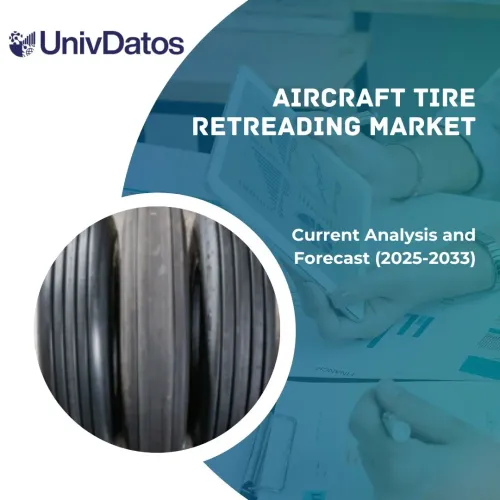- Inicio
- Acerca de nosotros
- Industria
- Servicios
- Leyendo
- Contáctenos
Mercado de autobuses de plataforma: Análisis actual y pronóstico (2024-2032)
Énfasis por tipo (eléctrico, diésel), por aplicación (transporte de pasajeros, tráfico de grupo) y regiones (Norteamérica [EE. UU., Canadá, Resto de Norteamérica], Europa [Alemania, Reino Unido, Francia, Italia, España, Resto de Europa], Asia-Pacífico [China, Japón, India, Resto de Asia-Pacífico], Resto del mundo)
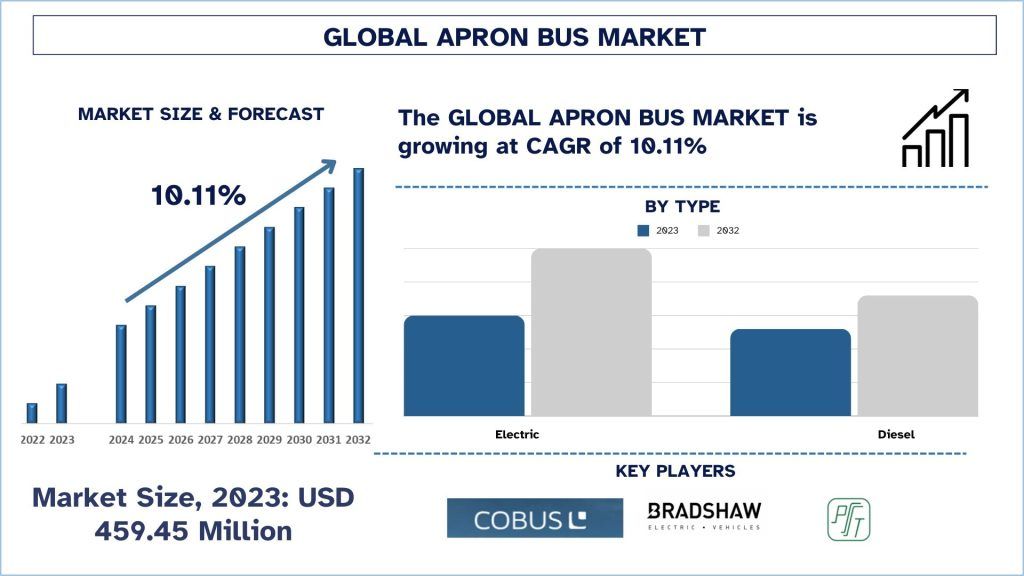 Tamaño y pronóstico del mercado global de autobuses de plataforma
Tamaño y pronóstico del mercado global de autobuses de plataforma
El mercado global de autobuses de plataforma se valoró en USD 459,45 millones en 2023 y se espera que crezca a una fuerte CAGR de alrededor del 10,11% durante el período de pronóstico (2024-2032) debido a la creciente demanda de autobuses de plataforma en la industria de la aviación en todo el mundo.
Análisis del mercado global de autobuses de plataforma
Los autobuses de plataforma se utilizan para trasladar personas desde la terminal hasta el avión destinado a viajar. Estos autobuses transportan tanto el tráfico aéreo como al personal de un lugar del aeropuerto a otro. El mercado ha experimentado un rápido aumento en los últimos años debido al auge de la industria de la aviación, con una floreciente población de clase media que opta por los viajes aéreos, tanto nacionales como internacionales. Este fenómeno ha acentuado la necesidad de ampliar los servicios de aviación mediante la compra de un gran número de aeronaves, así como el rápido desarrollo de aeropuertos y pistas de aterrizaje más nuevas, lo que promueve aún más la necesidad de autobuses de plataforma para atender el tráfico aéreo.
El mercado global de autobuses de plataforma se valoró en USD 459,45 millones en 2023 y se espera que crezca a una fuerte CAGR de alrededor del 10,11% durante el período de pronóstico (2024-2032). Uno de los factores clave que han respaldado la demanda de autobuses de plataforma es el aumento de la infraestructura de viajes aéreos a través del desarrollo de pistas y aeropuertos más nuevos. El creciente número de aeropuertos en todo el mundo también ha ayudado a la demanda de autobuses de plataforma más nuevos para ser comprados y utilizados para los viajes de tráfico aéreo a través de las terminales hasta el avión destinado. Por ejemplo, en 2024, la Administración Federal de Aviación (FAA) del Departamento de Transporte de los Estados Unidos anunció una inversión de USD 289 millones para 129 aeropuertos en 40 estados de los Estados Unidos para mejorar la seguridad y la eficiencia de los viajes aéreos. La inversión es parte de una mega inversión de USD 25 mil millones para financiar la mejora del aeropuerto a través de la expansión de la terminal, la actualización de los sistemas de equipaje, la mejora de la pista y las mejoras de la infraestructura de tráfico aéreo.
En otro ejemplo, en 2024, el gobierno de Portugal anunció la construcción de un mega aeropuerto, el aeropuerto Humberto Delgado de Lisboa, con un costo total de USD 10,64 mil millones.
Teniendo en cuenta la expansión de la infraestructura de viajes aéreos a gran escala, se anticipa que la demanda de autobuses de plataforma en los respectivos proyectos impulsará la demanda de autobuses de plataforma.
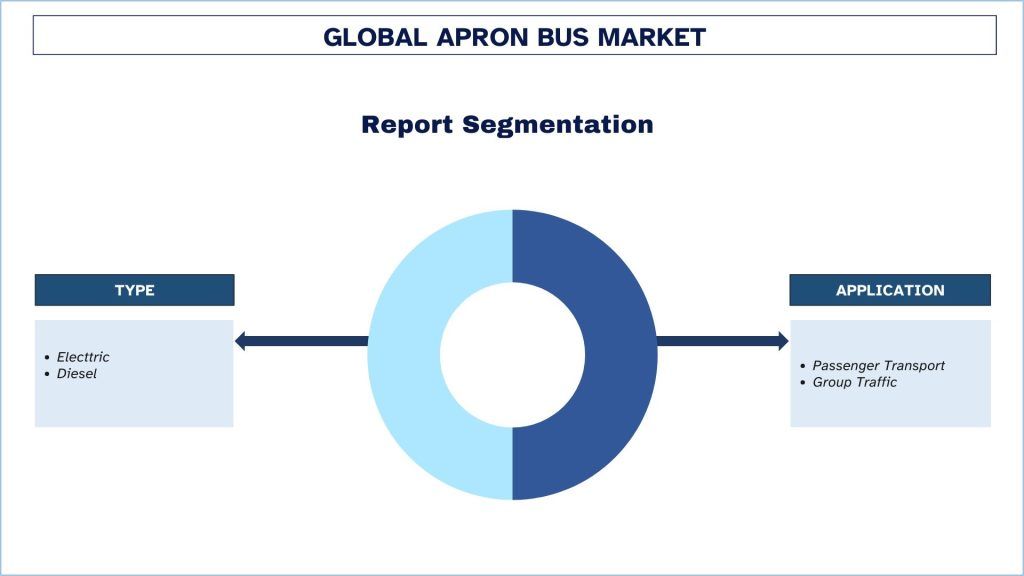
Tendencias del mercado global de autobuses de plataforma
Esta sección analiza las tendencias clave del mercado que están influyendo en los diversos segmentos del mercado global de autobuses de plataforma, según lo identificado por nuestro equipo de expertos en investigación.
Aumento de las operaciones de aerolíneas de bajo costo en las regiones en desarrollo
Muchas compañías de aerolíneas de bajo costo han surgido en la región, ofreciendo servicios de aerolíneas de bajo presupuesto para viajes aéreos nacionales e internacionales en países como India, China, Tailandia, Indonesia, Corea del Sur, Australia, Japón, etc. Teniendo en cuenta la alta demanda de aerolíneas de bajo costo, las expansiones aeroportuarias y la compra de nuevas aeronaves han aumentado, lo que ha llevado a una creciente demanda de autobuses de plataforma para el viaje diario. Algunos de los proveedores de servicios clave de aerolíneas de bajo costo en la región son Indigo, GoAir, AirAsia, Scoot, Nok Air, Jetstar, Citilink, Beijing Airlines, etc. Algunos de los países donde las LCC tienen una participación considerable en los servicios de aerolíneas son la región del Sudeste Asiático y el Sur de Asia, donde países como India, Indonesia, Tailandia, Malasia y Filipinas tienen un 74%, 63%, 57%, 51% y 58%, respectivamente, lo que supera el 50% del total de pasajeros que vuelan. Se anticipa que la participación respectiva aumentará aún más en los próximos años a medida que los ingresos de la clase media estén aumentando, lo que impulsará la demanda de servicios de aerolíneas de bajo presupuesto. En línea con esto, muchas de las LCC han anunciado sus planes de invertir en agregar nuevas aeronaves a la flota en los próximos años.
Con la creciente necesidad de aerolíneas de bajo costo en la industria de la aviación, se anticipa que la demanda de autobuses de plataforma en esta categoría en particular encontrará un rápido crecimiento, mejorando posteriormente el mercado de autobuses de plataforma en los próximos años.
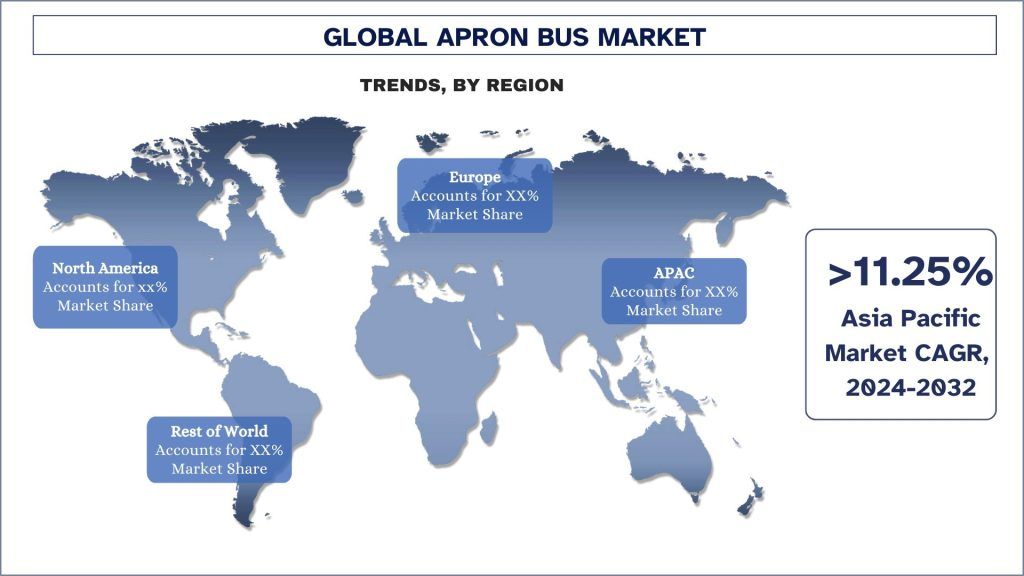
Se espera que Asia Pacífico tenga la mayor cuota de mercado durante el período de pronóstico
Se anticipa que la región de Asia Pacífico exhibirá un crecimiento considerable durante 2024-2032. Algunos de los factores clave que atribuyen al crecimiento son el auge de la industria de la aviación en la región, las estrictas políticas gubernamentales para mejorar la experiencia del pasajero y los viajes aéreos seguros, las empresas que se centran en suavizar las operaciones aeroportuarias, etc. A medida que la región está experimentando un aumento en el tráfico aéreo, muchos actores de la aviación están planeando expandir sus operaciones para aprovechar la creciente oportunidad de mercado. Además, la región también alberga un próspero mercado de aerolíneas de bajo costo, ya que los viajes aéreos en países como China, India, Indonesia, Tailandia, Singapur, etc., están experimentando un aumento en el tráfico aéreo. Muchos de los países de la región han anunciado que expandirán sus operaciones en las regiones. Por ejemplo, en 2023, ANA Holdings anunció el lanzamiento de una nueva aerolínea llamada AirJapan para 2024-2025, que volaría desde Japón a otros países asiáticos.
Otra aerolínea de bajo costo de Japan Airlines (JAL Group), lanzada en 2020, anunció la expansión de sus servicios de aerolíneas de bajo presupuesto al Aeropuerto Internacional de San Francisco (SFO) y al Aeropuerto Internacional de Narita de Tokio (NRT), con tarifas de ida tan bajas como USD 325 en 2023.
Muchas aerolíneas clave de la región han anunciado sus planes de expandir su flota mediante la adquisición de nuevas aeronaves. Por ejemplo, en 2023, Indigo anunció la adquisición de 500 nuevos aviones Airbus A320 con un costo total de USD 50 mil millones. Todas las entregas se realizarán para 2030-2035, lo que muestra un próximo crecimiento robusto del mercado de aerolíneas de bajo costo en India en los próximos años, es decir, 2023-2030.
Teniendo en cuenta la gran cantidad de pedidos pendientes que se entregarán en los próximos años, se anticipa que la demanda de servicios de autobuses de plataforma para el viaje diario suave a la terminal hacia las pistas aumentará en los años pronosticados, es decir, 2024-2032.
Descripción general de la industria global de autobuses de plataforma
El mercado global de autobuses de plataforma es competitivo y está fragmentado, con la presencia de varios actores del mercado global e internacional. Los actores clave están adoptando diferentes estrategias de crecimiento para mejorar su presencia en el mercado, como asociaciones, acuerdos, colaboraciones, lanzamientos de nuevos productos, expansiones geográficas y fusiones y adquisiciones. Algunos de los principales actores que operan en el mercado son Cobus Industries, Aeromobiles y Bradshaw Electric Vehicles, Kiitikori Oy, Power Force Technologies, WeihaiGuangtai Airport Equipment, Zhengzhou Yutong Bus, XINFA Airport Equipment, CIMC Tinda y BYD.
Noticias del mercado global de autobuses de plataforma
Según Boeing Corporation, entre 2023 y 2042 se entregarán un total de 32 420 aviones de fuselaje estrecho, de los cuales casi el 40% se utilizará para las operaciones de aerolíneas de bajo costo en todo el mundo.
En 2023, Indigo anunció la compra de 500 nuevos aviones Airbus A320 con un costo total de USD 50 mil millones. Todas las entregas se realizarán para 2030-2035, lo que muestra un próximo crecimiento robusto del mercado de aerolíneas de bajo costo en India en los próximos años, es decir, 2023-2030.
Cobertura del informe del mercado global de autobuses de plataforma
Atributo del informe | Detalles |
Año base | 2023 |
Período de pronóstico | 2024-2032 |
Impulso de crecimiento | Acelerar a una CAGR del 10,11% |
Tamaño del mercado 2023 | USD 459,45 millones |
Análisis regional | América del Norte, Europa, Asia-Pacífico, Resto del mundo |
Principales países | EE. UU., Canadá, Reino Unido, Francia, Alemania, Italia, España, China, Japón, India |
Empresas perfiladas | Cobus Industries, Aeromobiles, Bradshaw Electric Vehicles, Kiitikori Oy, Power Force Technologies, WeihaiGuangtai Airport Equipment, Zhengzhou Yutong Bus, XINFA Airport Equipment, CIMC Tinda y BYD. |
Alcance del informe | Tendencias del mercado, impulsores y restricciones; Estimación y pronóstico de ingresos; Análisis de segmentación; Análisis de la demanda y la oferta; Panorama competitivo; Perfil de la empresa |
Segmentos cubiertos | Por tipo, por aplicación, por región/país |
Razones para comprar este informe:
- El estudio incluye análisis de dimensionamiento y pronóstico del mercado validados por expertos clave autenticados de la industria.
- El informe presenta una revisión rápida del desempeño general de la industria de un vistazo.
- El informe cubre un análisis en profundidad de pares destacados de la industria con un enfoque principal en las finanzas clave del negocio, las carteras de productos, las estrategias de expansión y los desarrollos recientes.
- Examen detallado de los impulsores, las restricciones, las tendencias clave y las oportunidades que prevalecen en la industria.
- El estudio cubre de manera integral el mercado en diferentes segmentos.
- Análisis regional de inmersión profunda de la industria.
Opciones de personalización:
El mercado global de autobuses de plataforma se puede personalizar aún más según el requisito o cualquier otro segmento del mercado. Además de esto, UMI entiende que puede tener sus propias necesidades comerciales; por lo tanto, no dude en conectarse con nosotros para obtener un informe que se adapte completamente a sus requisitos.
Tabla de contenido
Metodología de Investigación para el Análisis del Mercado Global de Autobuses de Plataforma (2024-2032)
Analizar el mercado histórico, estimar el mercado actual y pronosticar el mercado futuro del Mercado Global de Autobuses de Plataforma fueron los tres pasos principales emprendidos para crear y analizar la adopción del Autobús de Plataforma Global en las principales regiones a nivel mundial. Se llevó a cabo una exhaustiva investigación secundaria para recopilar las cifras históricas del mercado y estimar el tamaño actual del mercado. En segundo lugar, para validar estos conocimientos, se tomaron en consideración numerosos hallazgos y supuestos. Además, también se realizaron exhaustivas entrevistas primarias con expertos de la industria en toda la cadena de valor del Mercado Global de Autobuses de Plataforma. Tras la suposición y validación de las cifras del mercado a través de entrevistas primarias, empleamos un enfoque de arriba hacia abajo/de abajo hacia arriba para pronosticar el tamaño total del mercado. Posteriormente, se adoptaron métodos de desglose del mercado y de triangulación de datos para estimar y analizar el tamaño del mercado de los segmentos y subsegmentos de la industria. La metodología detallada se explica a continuación:
Análisis del Tamaño Histórico del Mercado
Paso 1: Estudio Profundo de Fuentes Secundarias:
Se llevó a cabo un estudio secundario detallado para obtener el tamaño histórico del mercado del Mercado Global de Autobuses de Plataforma a través de fuentes internas de la empresa, como informes anuales y estados financieros, presentaciones de rendimiento, comunicados de prensa, etc., y fuentes externas que incluyen revistas, noticias y artículos, publicaciones gubernamentales, publicaciones de la competencia, informes sectoriales, bases de datos de terceros y otras publicaciones creíbles.
Paso 2: Segmentación del Mercado:
Después de obtener el tamaño histórico del mercado del Mercado Global de Autobuses de Plataforma, realizamos un análisis secundario detallado para recopilar información histórica del mercado y compartirla para diferentes segmentos y subsegmentos para las principales regiones. Los principales segmentos se incluyen en el informe por tipo y por aplicación. Además, se realizaron análisis regionales/a nivel de país para evaluar la adopción general de modelos de prueba en esa región.
Paso 3: Análisis de Factores:
Después de adquirir el tamaño histórico del mercado de diferentes segmentos y subsegmentos, realizamos un análisis de factores detallado para estimar el tamaño actual del mercado del Mercado Global de Autobuses de Plataforma. Además, realizamos un análisis de factores utilizando variables dependientes e independientes, como por tipo y por aplicación en el Mercado Global de Autobuses de Plataforma. Se realizó un análisis exhaustivo de los escenarios de oferta y demanda considerando las principales asociaciones, fusiones y adquisiciones, expansión comercial y lanzamientos de productos en el sector del Mercado Global de Autobuses de Plataforma en todo el mundo.
Estimación y Pronóstico del Tamaño Actual del Mercado
Tamaño Actual del Mercado: Basándonos en la información procesable de los 3 pasos anteriores, llegamos al tamaño actual del mercado, los actores clave en el Mercado Global de Autobuses de Plataforma y las cuotas de mercado de los segmentos. Todos los porcentajes de participación requeridos y los desgloses del mercado se determinaron utilizando el enfoque secundario mencionado anteriormente y se verificaron a través de entrevistas primarias.
Estimación y Pronóstico: Para la estimación y el pronóstico del mercado, se asignaron ponderaciones a diferentes factores, incluidos los impulsores y las tendencias, las restricciones y las oportunidades disponibles para las partes interesadas. Después de analizar estos factores, se aplicaron técnicas de pronóstico relevantes, es decir, el enfoque de arriba hacia abajo/de abajo hacia arriba, para llegar al pronóstico del mercado para 2032 para diferentes segmentos y subsegmentos en los principales mercados a nivel mundial. La metodología de investigación adoptada para estimar el tamaño del mercado abarca:
- El tamaño del mercado de la industria, en términos de ingresos (USD) y la tasa de adopción del Mercado Global de Autobuses de Plataforma en los principales mercados a nivel nacional
- Todos los porcentajes de participación, divisiones y desgloses de los segmentos y subsegmentos del mercado
- Actores clave en el Mercado Global de Autobuses de Plataforma en términos de productos ofrecidos. Además, las estrategias de crecimiento adoptadas por estos actores para competir en el mercado de rápido crecimiento.
Validación del Tamaño y la Cuota del Mercado
Investigación Primaria: Se realizaron entrevistas en profundidad con los Líderes de Opinión Clave (KOL), incluidos los Ejecutivos de Alto Nivel (CXO/VP, Jefe de Ventas, Jefe de Marketing, Jefe de Operaciones, Jefe Regional, Jefe de País, etc.) en las principales regiones. Los hallazgos primarios se resumieron y se realizó un análisis estadístico para probar la hipótesis establecida. Los aportes de la investigación primaria se consolidaron con los hallazgos secundarios, convirtiendo así la información en información procesable.
División de los Participantes Primarios en Diferentes Regiones
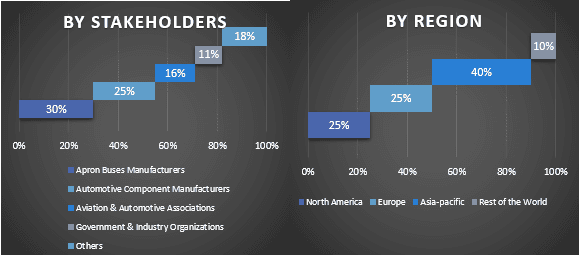
Ingeniería de Mercado
Se empleó la técnica de triangulación de datos para completar la estimación general del mercado y para llegar a cifras estadísticas precisas para cada segmento y subsegmento del Mercado Global de Autobuses de Plataforma. Los datos se dividieron en varios segmentos y subsegmentos después de estudiar varios parámetros y tendencias en el tipo y la aplicación en el Mercado Global de Autobuses de Plataforma.
El objetivo principal del Estudio del Mercado Global de Autobuses de Plataforma
Las tendencias actuales y futuras del mercado del Mercado Global de Autobuses de Plataforma se señalaron en el estudio. Los inversores pueden obtener información estratégica para basar su discreción para las inversiones en el análisis cualitativo y cuantitativo realizado en el estudio. Las tendencias actuales y futuras del mercado determinaron el atractivo general del mercado a nivel regional, proporcionando una plataforma para que el participante industrial explote el mercado sin explotar para beneficiarse de una ventaja de ser el primero en actuar. Otros objetivos cuantitativos de los estudios incluyen:
- Analizar el tamaño actual y pronosticado del mercado del Mercado Global de Autobuses de Plataforma en términos de valor (USD). Además, analice el tamaño actual y pronosticado del mercado de diferentes segmentos y subsegmentos.
- Los segmentos en el estudio incluyen áreas por tipo y por aplicación.
- Definir y analizar el marco regulatorio para el Mercado Global de Autobuses de Plataforma en la industria de la aviación.
- Analizar la cadena de valor involucrada con la presencia de varios intermediarios, junto con el análisis del comportamiento del cliente y de la competencia de la industria.
- Analizar el tamaño actual y pronosticado del mercado del Mercado Global de Autobuses de Plataforma para las principales regiones.
- Los principales países de las regiones estudiadas en el informe incluyen América del Norte (EE. UU., Canadá y el resto de América del Norte), Europa (el Reino Unido, Francia, Alemania, Italia, España, el resto de Europa), Asia-Pacífico (China, Japón, India, el resto de Asia-Pacífico), el resto del mundo
- Perfiles de empresa del Mercado Global de Autobuses de Plataforma y las estrategias de crecimiento adoptadas por los participantes del mercado para mantenerse en el mercado de rápido crecimiento.
- Análisis profundo a nivel regional de la industria
Preguntas frecuentes Preguntas frecuentes
P1: ¿Cuál es el tamaño actual del mercado y el potencial de crecimiento del mercado global de Apron Bus?
P2: ¿Cuáles son los factores impulsores del crecimiento del mercado mundial de autobuses de plataforma?
P3: ¿Qué segmento tiene la mayor cuota del mercado global de autobuses de plataforma por tipo?
P4: ¿Qué región dominará el mercado global de autobuses de plataforma?
Relacionados Informes
Los clientes que compraron este artículo también compraron







